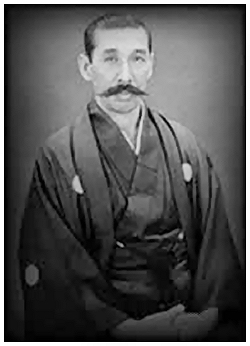Iaido is the modern martial art of Japanese Sword drawing. Originally a method practiced by swordsmen in feudal Japan for despatching an enemy quickly and clinically, it is now practiced by people of all ages, men and women, from all walks of life as a means of self cultivation.
Though the actions of the sword are undoubtedly still potentially lethal, as people now do not commonly carry swords they obviously have no bearing in terms of self defence in todays society and Iaido is generally practiced without a partner [opponent], the idea being more to confront ones self with the physical and mental difficulties of practice rather than overcoming any exterior attacker.
Though Iaido is a modern 'Martial Way' [Budo] it is steeped in tradition, history and Philosophy, Iaido is perhaps the most philosophically orientated of all the Japanese martial arts, these aspects giving it an old and esoteric flavour which undoubtedly contributes to it's appeal.
Iaido is generally considered to have originated with a man named Hayashizaki Jinsuke Shigenobu who resided in the Bushu area of Japan in the late sixteenth century, though some Ryuha [traditional schools] contest this saying that they had a system of practice in place before Jinsuke. However it is probably fair to say that Iai gained an identity of its own through the auspices of Jinsuke, making it distinct from the general practice of Kenjutsu. Jinsuke named his sword drawing method the 'Shimmei Muso Ryu', though it was also known by a number of other names the most common now being Jushin Ryu, and at that time it was classed as Batto Jutsu rather than Iai, implying that it was a method primarily concerned with using the sword directly from the scabbard to instantly strike an opponent down rather than anything to do with personal development. Even at this early stage of Iai's development though, there is speculation that Jinsuke's teachings did emphasize Iai as a defensive application and it would therefore seem that an element of spirituality was present from it's inception. Not much hard information remains about Jinsuke, but his influence on swordsmanship during his lifetime and since is evidenced by the fact that over two hundred schools, many still extant, trace their origins back to his initial teaching. Among these is the Muso Shinden Ryu, which is the Koryu [old school] practiced at Do Shin Ken Yu Kai. After Jinsuke's death his teaching continued through a line of succesors [known as the Jinsuke - Eishin line, Hasegawa Chikaranosuke Eishin having been the 7th headmaster in the line and was very influential in the subsequent teachings], some of these succesors forming their own traditions in the process, until the early twentieth century when large changes were made to the practice of Iai both in terms of it's practical application in society and it's syllabus. A number of people were instrumental in these changes, but foremost among them were Nakayama Hakudo and Oei Masamichi Shikei.
It was at this time that the name Iaido became more commonly used and that the idea that Iai could be used as a method of unifying a persons spirit, thoughts and actions really started to come to the fore. Hakudo and Shikei pulled upon a number of different influences to formalize a system which would be suitable for those interested in the serious study of Iai and also made available a sized down system of representative kata for those with a more passing interest, predominantly people who practiced Kendo. In doing this Hakudo and Shikei set the trend for how the practice of Iaido was to develop and also established what were to become the two most commonly practiced Koryu both in Japan and abroad, namely the Muso Shinden Ryu and the Muso Jikiden Eishin Ryu.
The next major development came about in 1966. After the second World War more and more Iai Justsu, Batto Jutsu traditions were changed to Iai -Do and Iaido came under the control of the Zen Nihon Kendo Renmei [the All Japan Kendo Association]. Kendo [Shinai Kendo] also had over the years developed an identity of it's own and the techniques and equipment had become quite different from Classical forms of swordsmanship and in time this had become a concern within the ZNKR. It was therefore decided [1966] to form a committee of representatives from various Iai Ryuha to develop a system which would allow people practicing kendo to better understand the essence of Classical swordsmanship and in 1968 seven representative kata were put into full circulation in Japan under the title of the 'Zen Nihon Kendo Renmei Seitei Iaido Gata', the term 'Seitei' meaning 'fixed system'. From that time on 'Seitei Iaido' has become the most popular form of Iai practiced worldwide and it is the Seitei system which forms the basis for all examinations for rank and teaching qualifications in Iaido within the International kendo Federation. In 1977 three more kata were added to the original seven and recently [2000] two more were added to make a total of twelve. The kata themselves have changed significantly in their physical appearance since there inception in 1968 and a meeting is held each year in Japan to establish practice trends and to make any changes deemed necessary to the kata in order that they continue to fulfil their purpose.
|
|

Nakayama Hakudo sensei
originator of Muso Shinden Ryu |
|
|